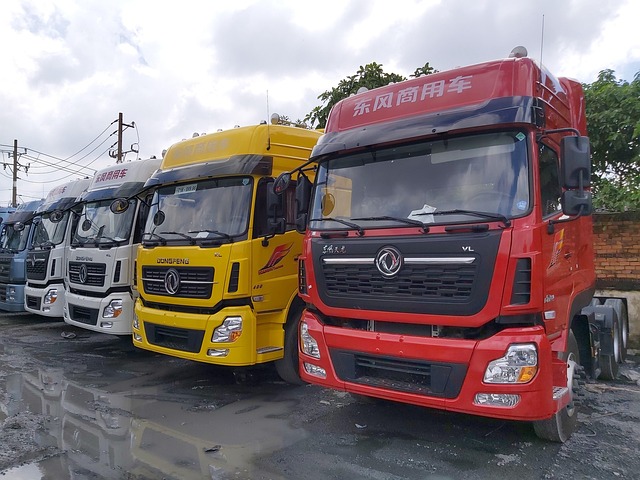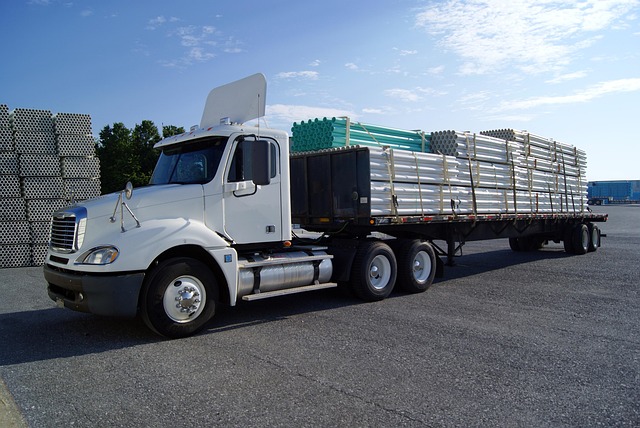“Learn how to seamlessly navigate the process of registering your car in California with our comprehensive guide. From understanding the essential requirements for car registration to mastering the step-by-step DMV VIN verification process, we’ve got you covered. Discover what documents you need and common issues that may arise. Additionally, explore post-registration steps and tips to ensure a smooth experience. Optimize your journey with effective dmv vin verification techniques.”
- Understand the Requirements for Car Registration in California
- Gather Necessary Documents for DMV VIN Verification
- The Step-by-Step Process of Registering Your Vehicle
- Common Issues and How to Resolve Them During Registration
- Post-Registration: Important Follow-Up Steps and Tips
Understand the Requirements for Car Registration in California

Before you begin the registration process, it’s crucial to understand the requirements for car registration in California. The state Department of Motor Vehicles (DMV) mandates several key steps, including a thorough vehicle inspection and verification of your vehicle’s unique identification number (VIN). This VIN verification is essential to ensure that your car meets safety and environmental standards set by the state.
One practical method for this initial check is through a mobile vin inspection or mobile vin verification service. These services allow you to have your vehicle’s VIN confirmed on-site, saving you time and effort. By ensuring your car complies with California’s requirements early in the registration process, you can streamline the rest of the procedures at the DMV.
Gather Necessary Documents for DMV VIN Verification

Before heading to the DMV for car registration, ensure you have all the required documents ready. The California Department of Motor Vehicles (DMV) will conduct a dmv vin verification process, which requires a specific set of paperwork. Gather your vehicle’s registration certificate from its previous state, as well as the title if you’re the original owner.
Additionally, bring along proof of insurance, a valid driver’s license, and any other identification documents requested by the DMV. If you prefer a mobile vin inspection or use a mobile vin verifier, ensure that the service provider has access to all necessary information. This streamlined process can save time when registering your vehicle in California.
The Step-by-Step Process of Registering Your Vehicle

Registering a car in California involves several straightforward steps that can be completed at your convenience. The process begins with gathering essential documents and ensuring your vehicle is roadworthy. First, schedule an appointment or visit a local Department of Motor Vehicles (DMV) office. Bring along proof of ownership, such as the title or bill of sale, along with valid identification like a driver’s license.
Next, undergo a DMV vin verification process, which includes inspecting and validating your vehicle’s unique Vehicle Identification Number (VIN). This step is crucial for ensuring that your car matches the details on record. For added convenience, many services offer mobile VIN verification using tools like a mobile VIN verifier, allowing you to complete this part of the process from the comfort of your home or even while waiting in line at the DMV. Once all documents are verified and your vehicle passes inspection, you’ll be on your way with a fresh registration certificate.
Common Issues and How to Resolve Them During Registration

During the car registration process in California, several common issues can arise, but understanding how to resolve them can make the experience smoother. One of the primary challenges is often ensuring accurate and timely DMV VIN verification. The unique 17-character Vehicle Identification Number (VIN) is crucial for identifying your vehicle, and any discrepancies or delays in this process could hinder registration. To fix this, double-check the VIN on all documents and ensure they match precisely. If there are issues with the DMV’s system, consider obtaining a mobile vin inspection from certified professionals to expedite the verification process.
Another frequent problem is outdated or incomplete vehicle documentation. This may include missing title transfers, incorrect odometer readings, or previous owners’ information not being up-to-date. To tackle these issues, gather all necessary paperwork, including proof of ownership and any history of maintenance records. If you’ve purchased the vehicle privately, a vin inspection can help verify its condition and history, providing peace of mind during registration. Promptly addressing these common problems will ensure a more efficient car registration process in California.
Post-Registration: Important Follow-Up Steps and Tips

After successfully registering your vehicle with the DMV, there are several crucial steps to ensure a smooth ownership experience. One key aspect is completing the Vehicle Identification Number (VIN) verification process as soon as possible. This step involves cross-referencing the VIN provided by the manufacturer against official records to confirm its authenticity and history. Many residents opt for a mobile vin verifier or vin inspection services for added convenience, allowing them to complete this task quickly and efficiently from the comfort of their homes.
A proper post-registration DMV vin verification is essential to protect yourself against potential fraud or hidden issues. It’s a critical step in establishing your vehicle’s legal status and ensuring you’re in compliance with California’s regulations. By keeping up with these follow-up actions, you’ll maintain a clean record and enjoy peace of mind while driving on California’s roads.
Registering a car in California involves understanding specific requirements, gathering essential documents for DMV VIN verification, and following a step-by-step process. By proactively addressing common issues and taking post-registration follow-up steps, you can ensure a smooth experience. Remember to keep your documentation up-to-date and adhere to local regulations for a seamless journey on California’s roads.
